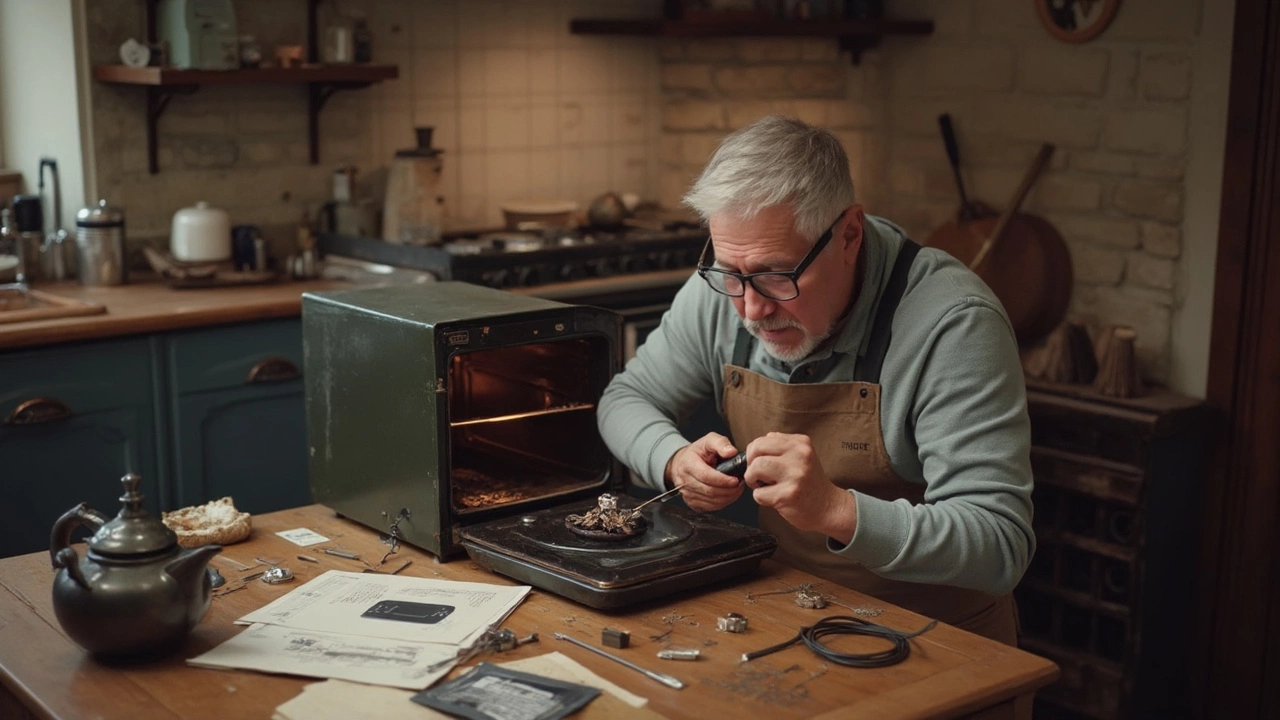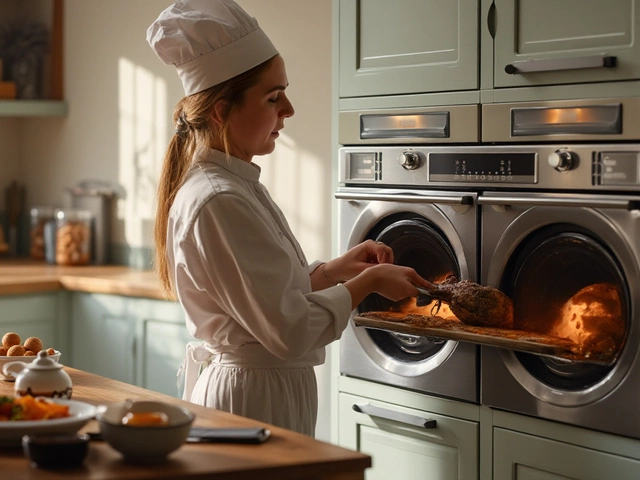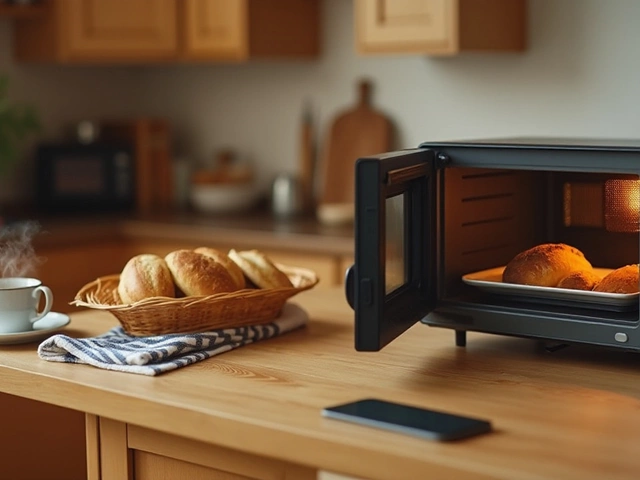Ever opened your oven and saw nothing but cold air? Or maybe it sparks and shuts off mid‑bake? Those glitches are frustrating, but most of them have a clear cause you can identify without guessing. Let’s walk through the usual suspects and show you how to test each one before you dial a repair tech.
The first question is whether the heating element is getting power. Turn the oven on to a high temperature and listen for a faint click – that’s the thermostat engaging. If you hear nothing, unplug the oven, remove the back panel and check the element with a multimeter. A reading of zero or infinite resistance means the element is burnt out and needs replacement. You can buy a matching part online and swap it in under an hour with just a screwdriver and a pair of gloves.
When the oven gets hot but the set temperature is off, the thermostat or temperature sensor is likely at fault. Most modern ovens use a thermistor – a small probe that feeds temperature data to the control board. Locate the sensor (usually a thin metal rod near the back wall), disconnect it, and test its resistance at room temperature. A healthy sensor should read around 1 kΩ; anything far off suggests it’s dirty or broken. Cleaning the probe with a soft brush often fixes the issue, but replace it if the resistance is still wrong.
Another common culprit is the oven door seal. A warped or cracked gasket lets heat escape, making the oven work harder and causing uneven cooking. Close the door and feel for drafts; if you notice air leaking, order a new seal that matches your model and snap it into place.
Electronic ovens store error codes that point directly to faulty components. Check the manual or the inside of the door for a quick reference chart. A code like “F10” usually means a problem with the main control board, while “F15” points to a temperature sensor issue. Reset the oven by turning off the circuit breaker for a minute, then restore power. If the code returns, it’s time to replace the indicated part or call a certified electrician – especially if the board is involved.
While you’re at it, inspect the wiring harnesses for burnt spots or loose connections. A simple wire clamp can prevent intermittent power loss that triggers shut‑offs.
If you’ve checked the element, sensor, door seal, and wiring and the oven still misbehaves, it’s probably a deeper electronic problem. Gas ovens add another layer of safety – a faulty igniter or gas valve should never be DIY‑handled. In those cases, call a qualified appliance repair service. They have the tools to test gas pressure, replace ignition components, and certify the work is safe.
Remember, regular maintenance makes these issues rarer. Clean the oven after each use, keep the door seal free of food debris, and run a quick self‑diagnosis with the built‑in test mode (if available) every few months. A little attention now saves you time, money, and a cold dinner later.
Got an oven that’s acting up? Start with the simple checks above, and you’ll often pinpoint the problem before the tech arrives. If you need a spare part or a quick replacement, our team in Bognor Regis can source the right component and get you back to baking in no time.

Oven troubles can throw a wrench in your meal plans. From a faulty heating element to problematic door hinges, diagnosing oven issues doesn't have to be daunting. This guide helps you identify and address common electric oven problems. Learn when a DIY fix is safe and when it's time to consult a professional. Simple steps and practical tips get you on your way to a working oven.

Choosing a cooker that stands the test of time can be daunting amid a sea of brands promising longevity. This article delves into which brands have stood out for their durability and reliability. By exploring user experiences and industry insights, it aims to guide you in the right direction. Discover how some brands maintain their reputation for endurance and what to consider when selecting your next appliance.

Searching for a trusty electric oven can make a big difference in your cooking experience and lessen repair issues. This article uncovers the top-performing brands known for reliable electric ovens, sharing insights on what makes these brands stand out. From innovative features to energy efficiency, you'll learn tips on choosing the right oven and maintaining it for long-lasting use. Whether you're shopping for a new appliance or fixing an old one, this guide shines a light on the best options available today.

Dealing with a lack of hot water can be incredibly frustrating, especially during colder months. This article provides step-by-step guidance to identify and fix common issues with water heaters, ensuring you can tackle minor problems yourself before calling a professional. By understanding the functionality and common problems associated with water heaters, you can save time, money, and avoid inconvenient cold showers.

Microwave ovens are essential appliances due to their convenience in heating food. However, they can encounter several problems over time. The most frequent cause of microwave failure is a faulty door switch. This article discusses common microwave problems, how to identify them, and offers practical guidance on how to handle these issues.

Deciding whether to repair or replace a dishwasher can be challenging. This article explores factors like cost, lifespan, and environmental impact to help homeowners make an informed decision. Learn about common dishwasher issues and repair tips to prolong its life. Evaluate professional repair services versus DIY fixes and consider when it's time to let go and invest in a new appliance.